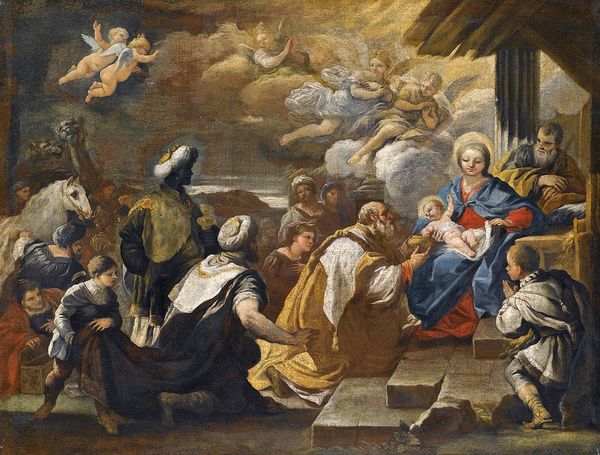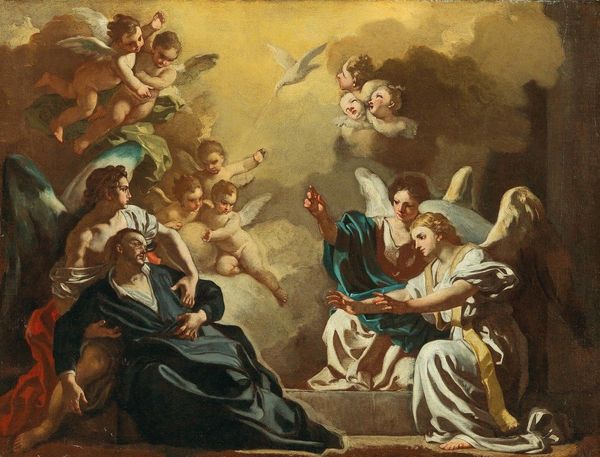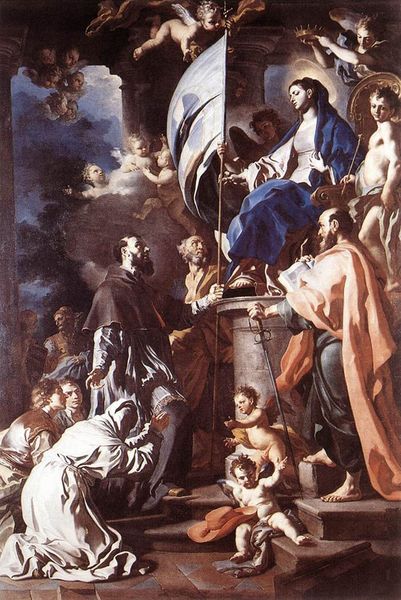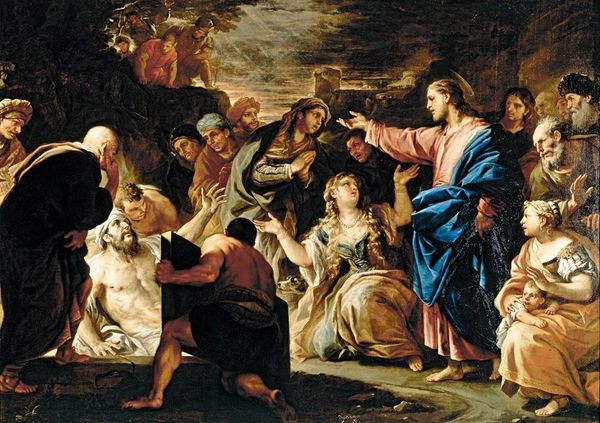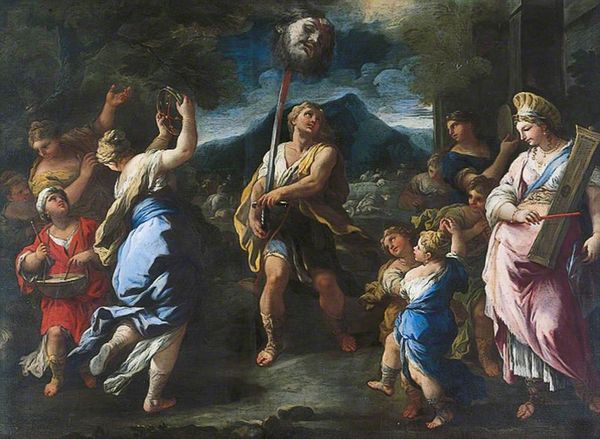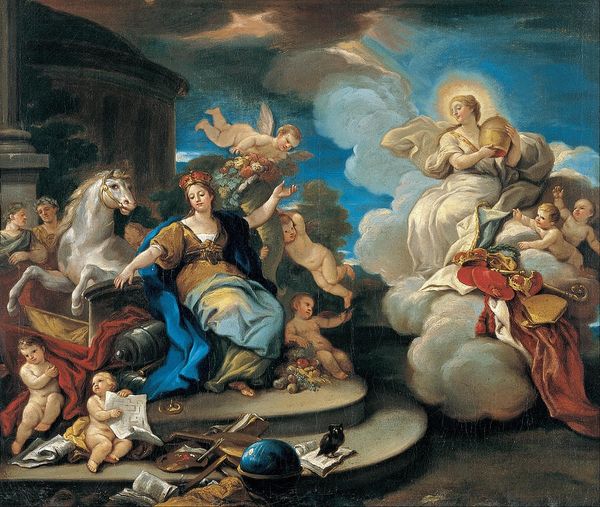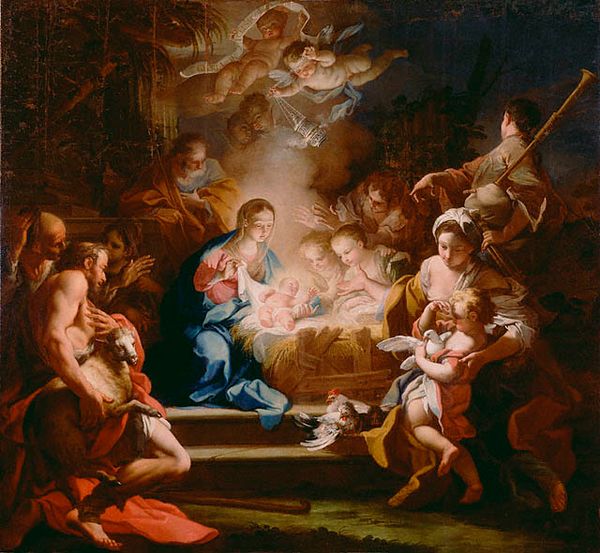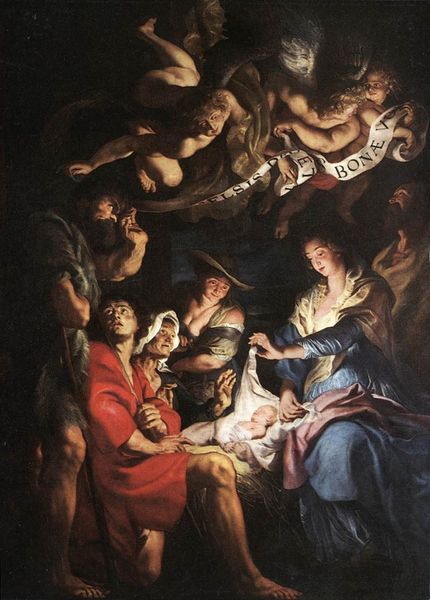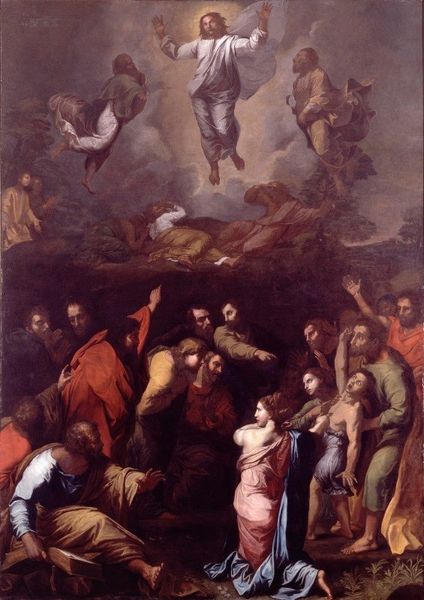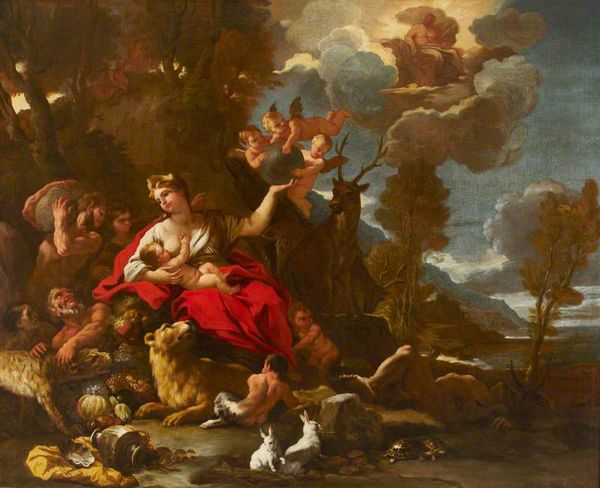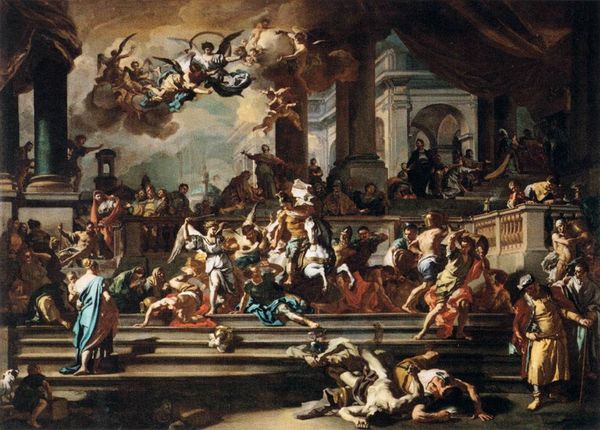
tempera, painting, oil-paint
#
portrait
#
allegory
#
baroque
#
tempera
#
painting
#
oil-paint
#
oil painting
#
christianity
#
mythology
#
history-painting
Dimensions: 105 x 130 cm
Copyright: Public domain
Editor: So, here we have Francesco Solimena’s “Judith with the Head of Holofernes,” made around 1728, using oil paints. It's a very theatrical piece, quite dynamic. What jumps out to you when you look at this painting? Curator: The power of archetypes immediately strikes me. Judith, the poised heroine, stands elevated, almost a goddess, while the crowd reacts in various states of shock and awe. Holofernes' head is not just a trophy; it's a potent symbol of the vanquishing of chaos, the triumph of order. Notice the cherubs above, presenting a crown—is it victory, or martyrdom? Editor: It's interesting that you call her a goddess. Are you suggesting this image has surpassed the religious and taken on something else? Curator: Exactly. Judith resonates through time, doesn’t she? Long after the specifics of the biblical story fade, she remains an icon of feminine strength. See how Solimena places her on a pedestal? The composition elevates her to an almost mythical status. Ask yourself, what anxieties about power, gender, and morality might this image be tapping into? Editor: The cherubs above really change the tone. At first glance, it seems like a gruesome scene, but the cherubs and the crown transform it into something more celebratory and triumphant, as you mentioned. Curator: It complicates the narrative, doesn't it? They act as a visual echo, subtly reshaping how we process the act itself. Do they offer divine sanction, perhaps absolving Judith of the violence? Or is it a comment on how power and violence become glorified over time? Editor: This has given me a lot to consider about the symbolic layering in Baroque painting, and about how artists can use recognizable stories to speak to bigger themes. Curator: Indeed. By decoding these artistic choices, we start to understand how art shapes our understanding of history, power, and ourselves.
Comments
No comments
Be the first to comment and join the conversation on the ultimate creative platform.

